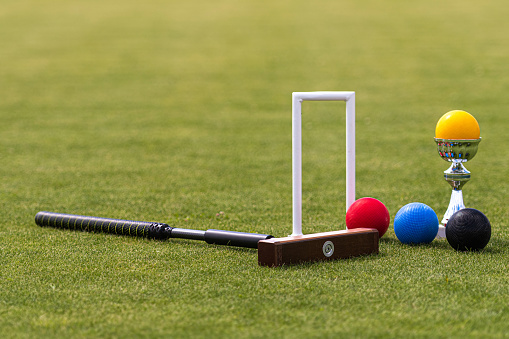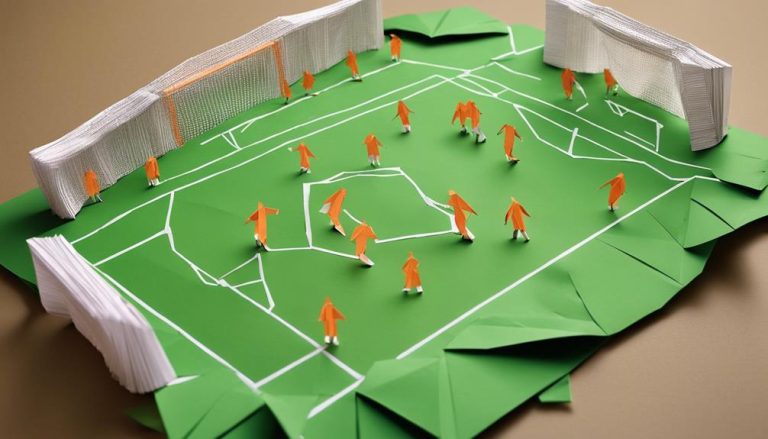General Rules of Frame Running
You'll need to meet specific eligibility criteria for frame running, including medical clearance and being at least 6 years old. Frames are designed to meet your specific needs, with considerations like seat height, wheelbase, and materials. You'll be classified into a category based on your impairment and athletic ability. Race formats vary, but expect mass starts, varying distances, and obstacles like tight turns. Make sure to understand starting and finishing procedures, lane allocation, and equipment rules to avoid penalties or disqualification. As you step into the world of frame running, you'll discover more nuances to master.
Eligibility Criteria for Frame Running
You're eligible to participate in frame running if you have a physical impairment that affects your ability to run, such as impaired muscle power, limited range of motion, or impaired cardiovascular function. This inclusive sport is designed for individuals with physical disabilities, providing an opportunity to experience the thrill of running despite physical limitations. To participate, you'll need to obtain medical clearance from a qualified physician, confirming that it's necessary for you to engage in frame running. This clearance is crucial, as it verifies your physical readiness for the physical demands of the sport.
In addition to medical clearance, age restrictions apply. Typically, participants must be at least 6 years old to make sure they can safely operate the frame runner. However, some organizations may have varying age requirements, so it's important to check with the specific governing body or program you're interested in. By meeting these eligibility criteria, you'll be able to experience the freedom and empowerment that frame running provides.
Frame Design and Specifications
As you design your frame, you'll need to take into account the frame geometry options that suit your running style and needs. You'll also want to select materials that balance durability with weight and cost considerations. By choosing the right materials and design, you can guarantee your frame can withstand the rigors of regular use.
Frame Geometry Options
Your frame geometry options depend on the type of frame running you plan to do, with recreational runners typically opting for a more upright posture and competitive runners often choosing a more aggressive, aerodynamic stance. This decision will greatly impact your overall performance, comfort, and efficiency.
When selecting a frame, consider the seat height, which affects your running posture and stride. A lower seat height allows for a more aggressive stance, while a higher seat height provides more comfort and visibility. Wheelbase adjustability is another important factor, as it enables you to fine-tune your frame to suit your running style and terrain. A shorter wheelbase provides better maneuverability, while a longer wheelbase offers more stability at high speeds.
Materials and Durability
When it comes to frame design and specifications, selecting the right materials is essential, since they directly impact the durability, weight, and overall performance of your frame. You want a frame that can withstand the demands of running, one that will last for a long time and provide you with the best possible experience.
Here are some key factors to take into account when it comes to materials and durability:
- Aluminum alloys: Lightweight, corrosion-resistant, and affordable, aluminum alloys are a popular choice for frame construction.
- Carbon fiber: Exceptionally strong, lightweight, and durable, carbon fiber frames offer superior performance and a longer lifespan.
- Titanium: Known for its high strength-to-weight ratio, titanium frames are incredibly durable and resistant to corrosion.
Athlete Classification and Categorization
Navigating the world of frame running requires a solid understanding of the athlete classification and categorization process. Familiarizing yourself with the different disability categories, which are divided into classes based on the type and severity of the impairment, is crucial. By doing so, you'll be able to identify the specific class you or your athlete belongs to, ensuring fair competition and accurate classification.
Classification Process
During the evaluation process, athletes undergo a thorough assessment to determine their respective sport class, which defines their functional abilities and competitive eligibility in frame running events. This classification process involves a detailed evaluation of your physical abilities, medical history, and athletic performance. You'll be evaluated on your strength, range of motion, and coordination, among other factors.
Here are the key aspects of the classification process:
- Medical Evaluation: A thorough medical examination to identify any underlying health conditions that may impact your performance.
- Functional Abilities Assessment: An evaluation of your physical abilities, such as strength, power, and endurance, to determine your functional capacity.
- Sport-Specific Assessment: A simulation of frame running events to assess your athletic performance and competitive eligibility.
The classification process is essential to ensure fair competition and to minimize classification challenges. Medical implications are also taken into account to guarantee your safety and well-being during competition. By undergoing this detailed evaluation, you'll be assigned a sport class that accurately reflects your abilities, allowing you to compete at your best.
Disability Categories
You'll be categorized into one of several disability categories, which are defined by the International Paralympic Committee (IPC) and used to group athletes with similar impairments and abilities. These categories guarantee fair competition and provide a level playing field for all athletes. The IPC recognizes eight disability categories: physical impairment, visual impairment, intellectual disability, hearing impairment, short stature, and others.
As an athlete, you'll undergo a classification assessment to determine your specific category. This assessment evaluates your impairment, medical history, and athletic abilities. Your classification will then be used to group you with athletes who have similar abilities, ensuring that you compete against others with similar challenges.
Disability awareness is essential in promoting inclusive sports. By understanding and acknowledging the diverse needs of athletes with disabilities, we can create a more inclusive environment that promotes equal opportunities for all. Inclusive sports foster a sense of community, break down barriers, and empower athletes to reach their full potential. As you navigate the world of frame running, remember that your unique abilities and strengths are valued and celebrated.
Race Format and Distance Rules
In frame running competitions, races typically feature a mass start, where all athletes begin simultaneously, and distances vary depending on the specific event. As you prepare for your frame running competition, it is crucial to understand the race format and distance rules.
Here are three key aspects to keep in mind:
- Course Obstacles: The race course may include obstacles such as tight turns, inclines, and declines, which you'll need to navigate with your frame runner. Be prepared to adapt to these challenges and maintain your speed and control.
- Safety Considerations: Your safety is paramount, so make sure you're aware of the course layout, potential hazards, and emergency procedures. Always prioritize your well-being and that of your fellow athletes.
- Distance Variations: Frame running events can range from short sprints to longer endurance races. Familiarize yourself with the specific distance and format of your event to optimize your training and strategy.
Starting and Finishing Procedures
When you're at the starting line, make sure you're positioned correctly, with your frame runner aligned and ready to launch at the sound of the starter's gun. Your racing strategies begin here, so focus on a quick and efficient start to gain a competitive edge.
| Starting Procedure | Finishing Procedure |
|---|---|
| Align your frame runner | Cross the finish line with your frame intact |
| Keep your body centered | Avoid sudden stops or sharp turns |
| Prepare for acceleration | Maintain control and balance |
As you approach the finish line, maintain your speed and control to guarantee a smooth crossing. Remember to prioritize safety precautions, keeping your body and frame intact to avoid penalties or disqualification. By following these procedures, you'll be well on your way to a successful frame running experience.
Lane Allocation and Draw Process
Allocating lanes to frame runners involves a randomized draw process, ensuring fairness and minimizing competitive advantages. This process eliminates any potential bias and provides an equal opportunity for all participants. As a frame runner, you'll undergo a draw process that determines your lane assignment.
Here's how the draw process typically unfolds:
- Random Lane Assignment: A randomized draw is conducted to assign lanes to each frame runner.
- Lane Etiquette: Frame runners are expected to respect their assigned lane and maintain lane discipline throughout the competition.
- Draw Strategies: Developing a draw strategy can be important in frame running, as it can impact your overall performance and competitive edge.
Prohibited Aids and Equipment
You're responsible for guaranteeing you don't use any prohibited aids or equipment that could provide an unfair advantage or compromise the integrity of frame running. This includes any device or technology that's not explicitly approved by the governing body. As a frame runner, you're expected to prioritize fairness and safety above all else.
When it comes to Assistive Technology, you're allowed to use devices that are specifically designed to enhance your physical abilities, but only if they're approved and certified by the governing body. However, any device that provides an unfair advantage or compromises safety will be prohibited.
It's also important to note that certain Safety Features are mandatory, such as helmets and knee pads. These features are designed to protect you from harm and ensure a safe and enjoyable experience for all participants.
Penalties and Disqualification Rules
In the event of a rules infraction, penalties will be imposed, ranging from verbal warnings to disqualification, depending on the severity of the offense. As a frame runner, understanding the penalties and disqualification rules is crucial to guarantee Fair Play and uphold the spirit of competition.
If you're found guilty of a rules infraction, you'll face one of the following penalties:
- Verbal warning: A warning given by the officials for a minor infraction, which serves as a caution for future conduct.
- Time penalty: A time addition or deduction from your overall time, depending on the nature of the infraction.
- Disqualification: Immediate removal from the competition, resulting in a DNS (Did Not Start) or DNF (Did Not Finish) classification.
Appeals and Protest Procedures
If you believe a penalty or disqualification decision is unfair, you can initiate the appeals process, which outlines the procedures for filing a protest and the subsequent review and resolution of the issue. This process ensures that you have a platform to contest decisions you deem unjust.
When filing a protest, it's vital to provide substantial evidence to support your claim. This evidence can include, but is not limited to, witness statements, video footage, and official records. Make sure that you submit this evidence in a timely manner, as outlined in the appeals process guidelines.
Jurisdiction issues can arise during the appeals process, and it's important to understand the authority of the governing body overseeing the appeal. Familiarize yourself with the rules and regulations governing the appeals process to avoid unnecessary delays or dismissals.
Frequently Asked Questions
Can Athletes With Visual Impairments Participate in Frame Running?
You might wonder, can athletes with visual impairments participate in frame running? Absolutely, with Visual Coaching and Blind Ambition, they can overcome obstacles, shattering barriers and achieving liberation through inclusive, adaptive sports.
How Old Do Athletes Need to Be to Start Frame Running Training?
You're ready to start frame running training when you've reached a minimum age of 8, demonstrating training readiness through physical and emotional maturity, ensuring a safe and liberating experience.
Can Athletes With Physical Disabilities Use Customized Frames?
'Think you're limited by a physical disability? Think again! You can tap into the power of customized frames, utilizing frame modifications and adaptive technology to unlock your potential and shatter barriers, empowering you to run free.'
Do Athletes Need to Wear Specific Shoes for Frame Running?
When you're frame running, you'll need shoes with Sole Support that stabilizes your foot, and a Heel Height that promotes a natural stride; don't compromise on these features, as they're essential for your comfort, safety, and performance.
Can Athletes Compete in Both Individual and Team Events Simultaneously?
You're wondering if you can tackle both individual and team events at once? Event Scheduling is key; with careful planning, you can balance Team Dynamics and personal goals, but be prepared for a logistical juggling act.






